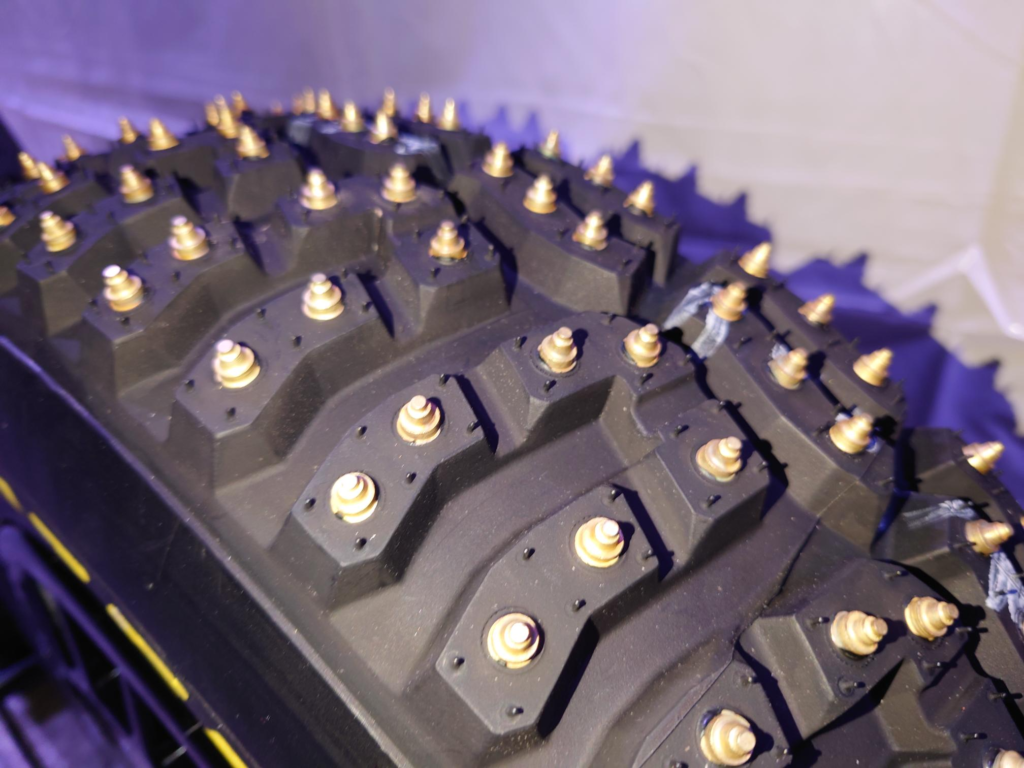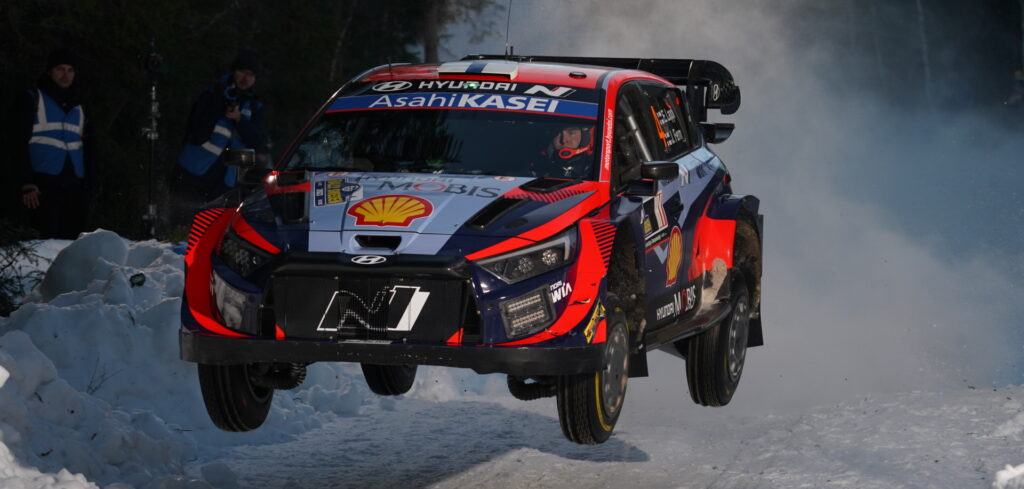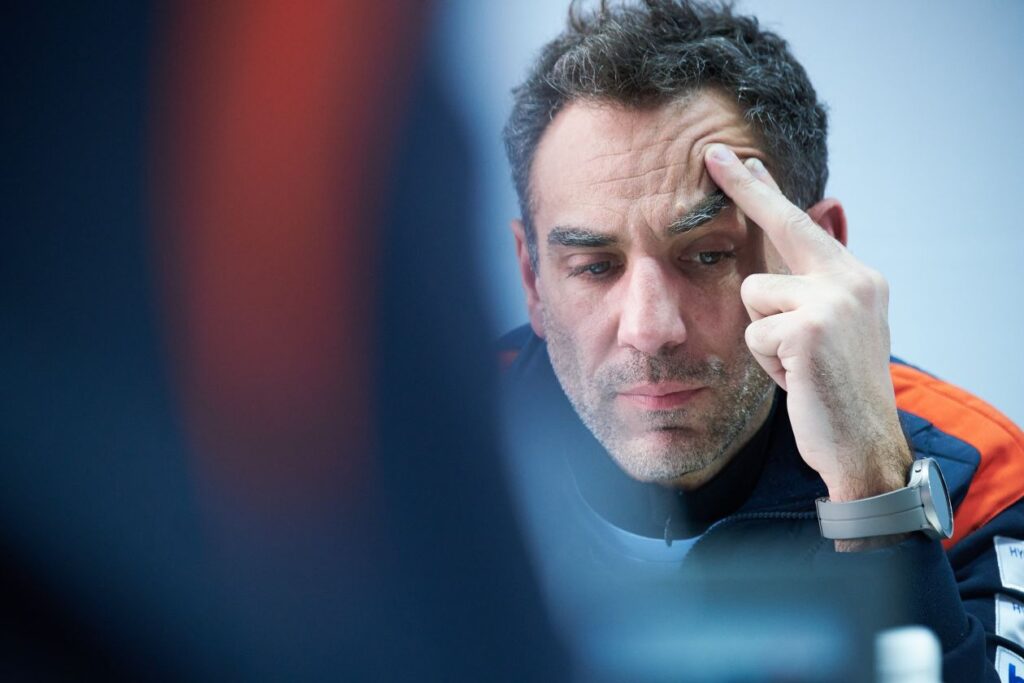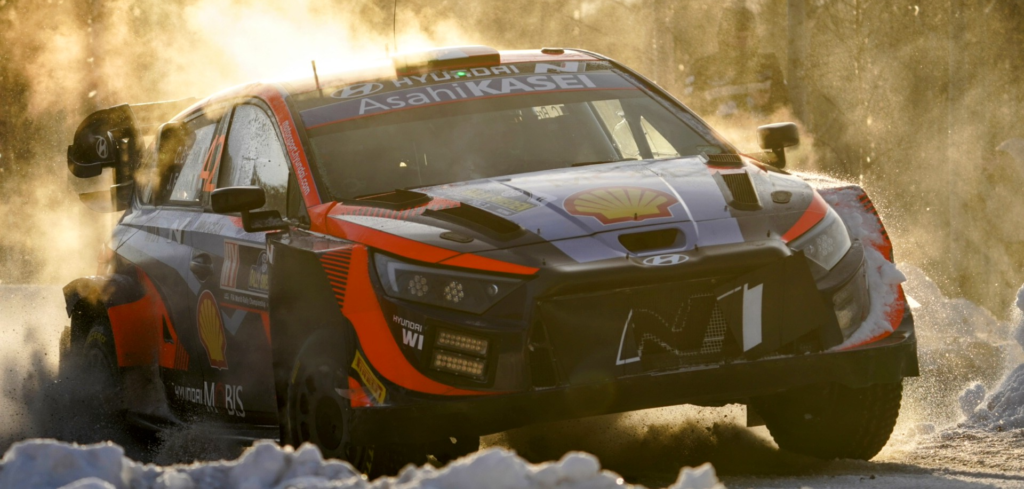Rally Sweden saw M-Sport take its first victory since Monte Carlo 2022, with new signing Ott Tänak giving an imperious performance across the snow-covered stages. However, Hyundai was hot on M-Sport’s heels and, with Toyota also on strong form, the season is shaping up for a potentially close three-way battle.
Tire trauma
One talking point on the Saturday afternoon of the event was tire performance, specifically the fact that Rally1 runners, Hyundai drivers Craig Breen and Esapekka Lappi, and Tänak in his Ford Puma suffered tire delaminations and punctures.
The weather conditions leading up to the rally included several freeze-thaw cycles, which meant snow cover on the stages was not particularly deep but the iced surface was bullet hard. However, with all stages being run at least twice, this ice crust often wore through to gravel, increasing the chances of tire damage.
As Toyota technical director Tom Fowler explained, “In terms of the setup of the car, the most important thing that everyone’s trying to do is keep the studs alive for as long as possible. Anytime where you have more ice base, not a deep snow situation, your stud condition and your tire condition become huge performance factors.
“You’re looking for a setup that is fast but won’t use the tires at a rate that means they run out. That is the case inside each loop but also across the rally because we don’t actually have enough new tires to run fresh for the complete event.”

Murmurings were directed at Pirelli following the Saturday failures. However, Pirelli rally activity manager Terenzio Testoni mounted a robust defense of the company’s products: “It was an intense weekend in which we raced to the limit, and even beyond, in every respect. On Saturday afternoon the road surface conditions were certainly beyond the limit – really difficult and very different from what can be expected in a winter race. Loose ice, deep ruts and gravel sections put the tires under stress and put the drivers to the test.
“To make the conditions even more extreme was the combination of very uneven ground and high speeds. In addition, in the understandable and normal quest for performance by the teams, the settings of the cars and the parameters of the tires themselves were also pushed to the limit. After our investigations, we understand that there were in some cases tire pressures that were much lower at the finish than we recommend at the start: we have never seen tire pressures that low until today.
“However, a distinction must be made between the incidents that occurred. The Hyundai cars suffered delaminations in SS13. Together with the team, with whom there is a historical and very productive collaboration, we identified the problem and found solutions. Tänak, on the other hand, did not suffer a delamination in SS14, but a puncture with a slow air leak, which also resulted in damage to the tire structure after kilometers of flat driving. In the rest of the weekend, when the conditions were properly winter, we saw great performances, with very high-speed peaks and a tight and interesting race.”

Cyril’s way
The start of 2023 saw Hyundai finally find a team principal over a year after the departure of Andrea Adamo, in the form of ex-Renault and Alpine F1 head Cyril Abiteboul. PMW talked to Abiteboul in Sweden, where he admitted that although rallying is a very different proposition from his previous role, there are some lessons he feels could be transferred across.
“I’m trying to build a bit of what I’ve seen in Formula 1, which is great at building exchanges between engineers and drivers. Looking at how you build a group around the drivers to make sure that they’ve got the best platform on which to build their performance, I’m trying to bring that to the rally world, which maybe is not sufficiently driven by engineering. I think if I tried to turn this place into a Formula 1 team, that would fail. I think we need to define our own way of doing things, which is both a combination of what’s done in rally and what I have been exposed to in Formula 1.”
Moving toward this goal, Abiteboul instigated several new procedures in Sweden to help improve the interaction between drivers and engineers. “We’re trying something this weekend. We are going to try to build a checklist, which is a standard document that the engineers need to go through. That’s where we need to find the right balance between having a sort of one-size-fits-all approach but at the same time being able to adapt to each of the drivers. Because at the end of the day, what we need is for maximum lap time to come from the confidence between the driver, the crew, the car and the engineering teams around them.
“That confidence is not a perfect science, it is not the result of an algorithm, but we do need to have a minimum of standard procedures just to make sure that we are not losing something.” He went on to highlight that a hybrid issue the team experienced in Monte Carlo was the result of procedural failure: “The problem that we had with the hybrid system was due to something that was not checked properly. And that’s typically where having some standard checklist could help.”




